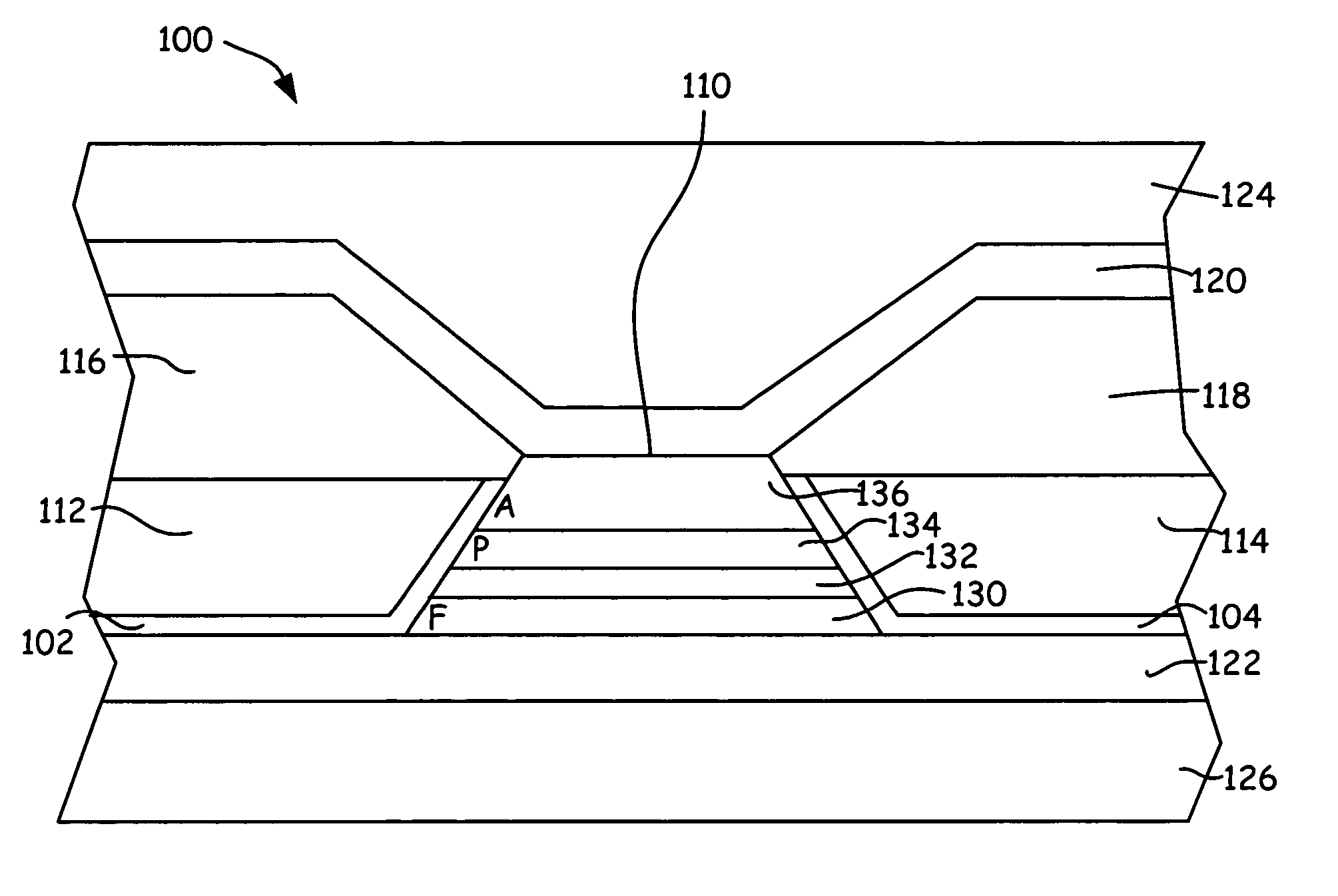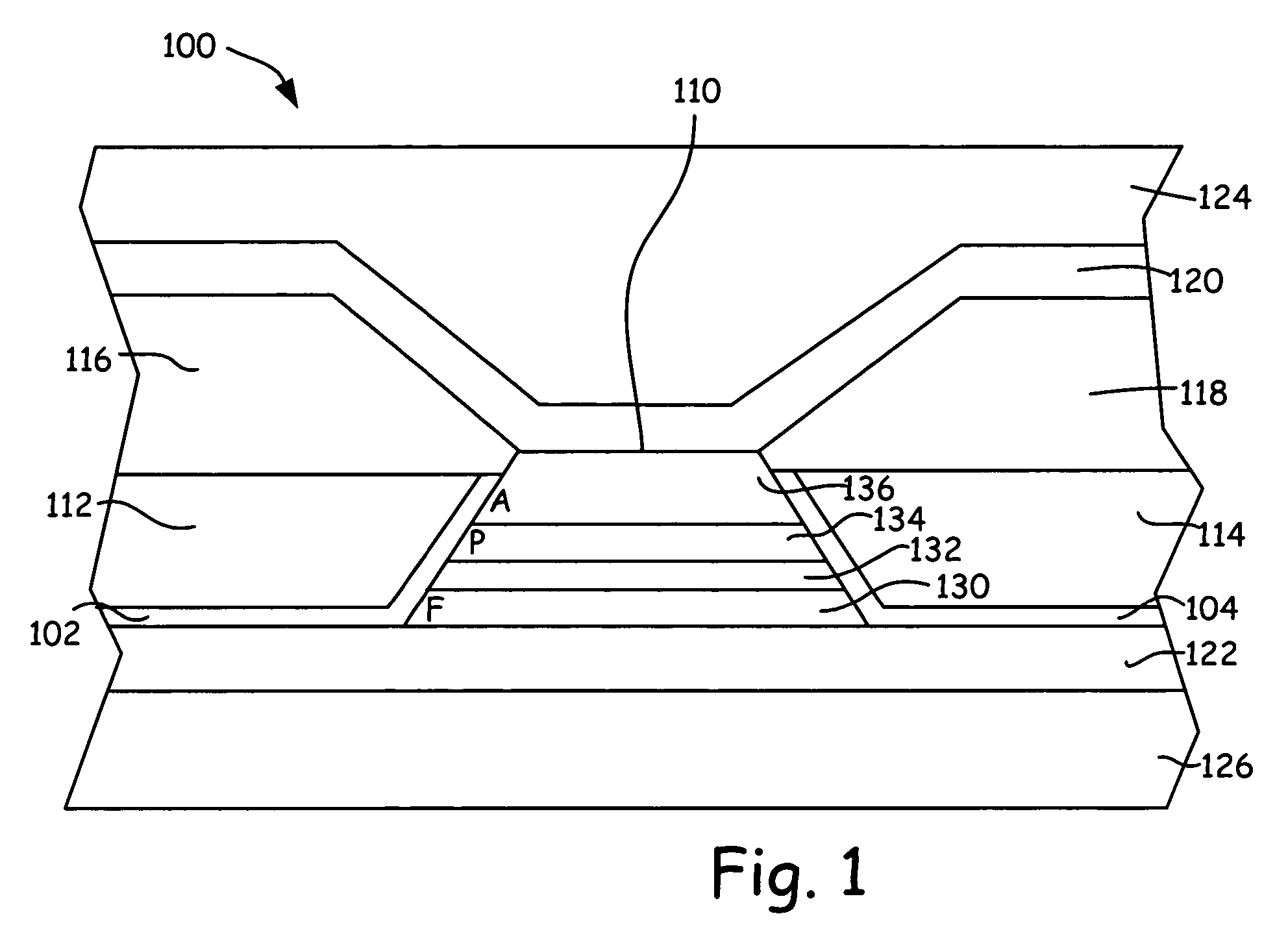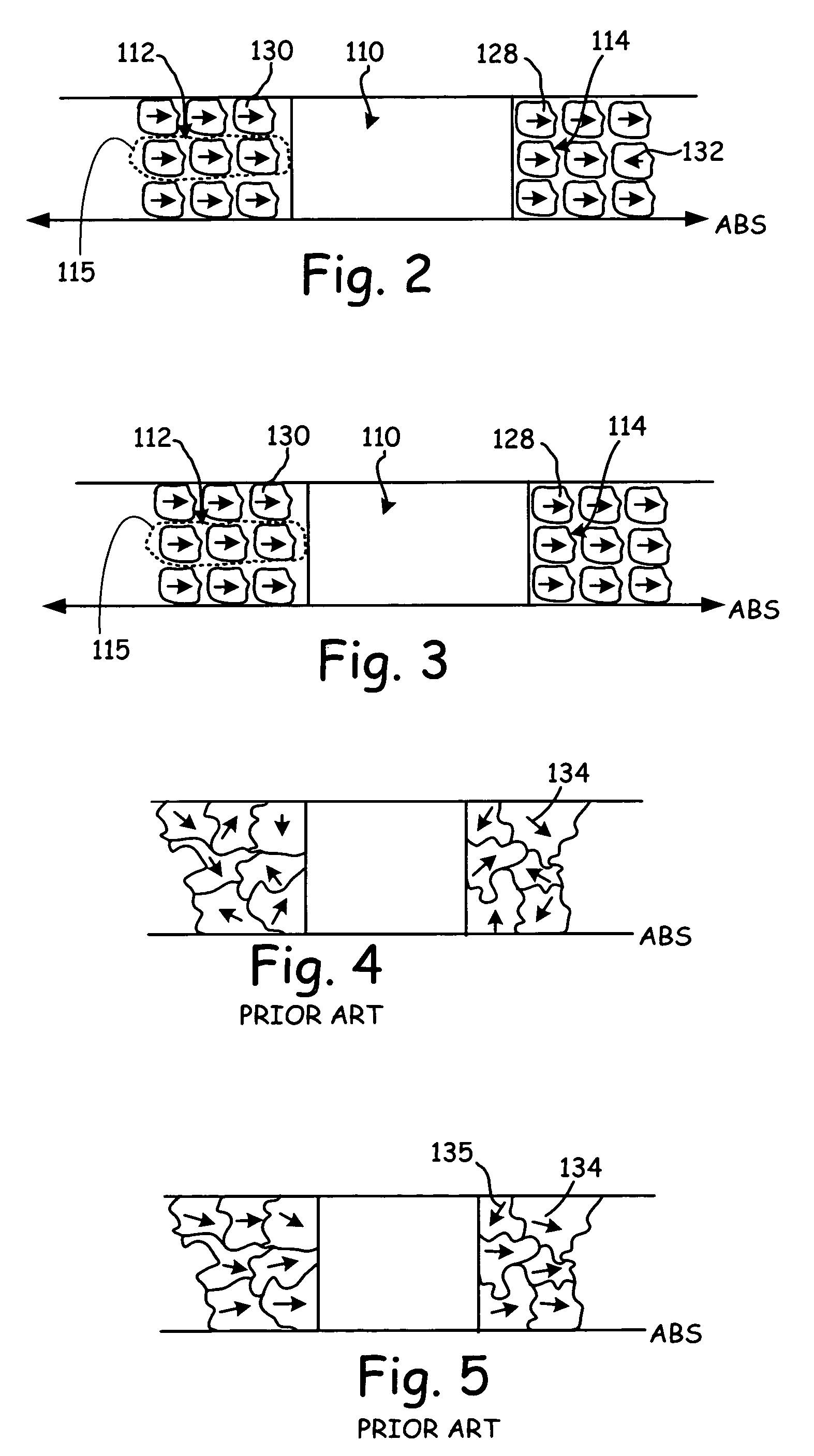High magnetic anisotropy hard magnetic bias element
a hard magnetic and anisotropy technology, applied in the field of storage and retrieval of data, can solve the problems of data recovery difficulty, less than perfect alignment of the magnetic moments within the hard magnetic thin film, and degradation of the sensor properties, and achieve the effect of reducing the distortion in the sensor operation
- Summary
- Abstract
- Description
- Claims
- Application Information
AI Technical Summary
Benefits of technology
Problems solved by technology
Method used
Image
Examples
Embodiment Construction
[0029]FIG. 1 is a cross-sectional view of a first example transducing head 100 with high anisotropy bias elements in accord with the present invention. Transducing head 100 is a current-in-plane (CIP) type head which includes first and second permanent magnet (PM) seed layers 102 and 104, magnetoresistive (MR) sensor 110, first and second high anisotropy permanent magnet (PM) bias elements 112 and 114, first and second contacts 116 and 118, top and bottom insulating layers 120 and 122, and top and bottom shields 124 and 126.
[0030]MR sensor 110 is a multilayer device operable to sense magnetic flux from a magnetic media. MR sensor 110 may be any one of a plurality of MR-type sensors, including, but not limited to, AMR, GMR, TMR, spin-valve and spin-tunnel sensors. At least one layer of MR sensor 110 is a sensing layer that requires longitudinal biasing, such as a free layer of a GMR spin-valve sensor. Moreover, for several types of MR sensors, at least one layer of MR sensor 110 is a...
PUM
| Property | Measurement | Unit |
|---|---|---|
| angle | aaaaa | aaaaa |
| angle | aaaaa | aaaaa |
| angle | aaaaa | aaaaa |
Abstract
Description
Claims
Application Information
 Login to View More
Login to View More - R&D
- Intellectual Property
- Life Sciences
- Materials
- Tech Scout
- Unparalleled Data Quality
- Higher Quality Content
- 60% Fewer Hallucinations
Browse by: Latest US Patents, China's latest patents, Technical Efficacy Thesaurus, Application Domain, Technology Topic, Popular Technical Reports.
© 2025 PatSnap. All rights reserved.Legal|Privacy policy|Modern Slavery Act Transparency Statement|Sitemap|About US| Contact US: help@patsnap.com



